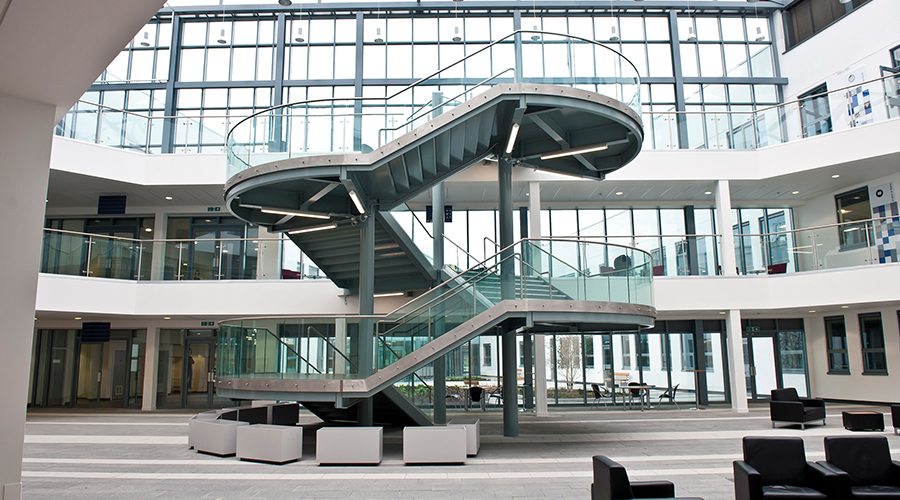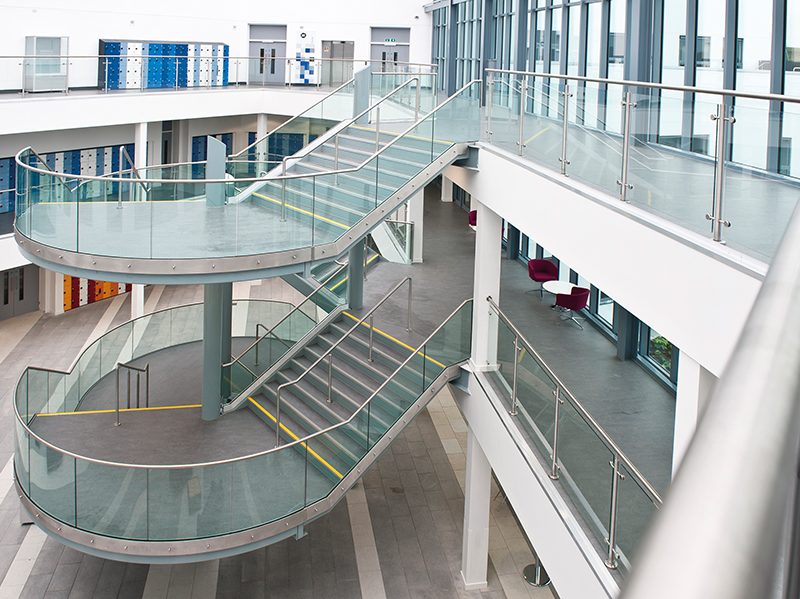How can glass be used in public buildings such as schools to create modern, inspiring atmospheres and an inclusive, sociable space? Simon Boocock, Managing Director of CRL Europe, takes a look at the reasons behind the trend.
CR Laurence
Glass is increasingly being chosen for use in schools and brings a number of positive benefits to an education environment. From an important practical perspective, safety and protective glazing helps improve school security, but the advantages actually go far further than this alone.
Research suggests that students learn best in bright school spaces and morale among staff and children is improved. To capture, pass on and share daylight and artificial lighting, glass has become the material of choice, allowing light to filter from one space to the next. Glazing has the added benefit of providing clear vision between spaces, offering a sense of openness, connectivity and security.
The cost-effectiveness of glass is another huge advantage in public sector buildings – this very durable material will last a long time and creates a timeless impression, so won’t need to be frequently replaced with any modernisation of a school’s interior. Letting natural light through will also save on energy bills, making glass a very cost-effective resource.
However, noise levels can be difficult to control in open-plan school buildings, and distractions can affect work levels, while another potential pitfall of the overuse of glass for school buildings is the effect of solar heat gain. Warming a building with the flow of natural sunlight certainly increases energy efficiency and makes for sustainable construction, but too much uncontrollable heat will make the interior uncomfortable and lead to what is commonly known as the greenhouse effect.
Designers need to, therefore, find a happy medium; a light-filled, open-plan-inspired space with good acoustics where everyone can work in harmony. Keeping the look and feel of an open-plan environment that is so important, the use of glass enables natural light to flow and a high-end look to be achieved, while acoustics and privacy levels can also be managed more effectively.
One of the biggest challenges is getting natural light into parts of the school interior. To overcome this, toughened safety glass and impact-resistant glazing is now quite commonly used in light wells, stairwells, corridors, wall partitions, lobbies and interior courtyards. These transparent fire-protection barriers allow light to pass from one area to another, blending natural and artificial lighting into spaces deep inside the school building.
Glass was the solution for architects working on the ESSA Academy in Bolton, creating a striking staircase within an ‘inside-outside’ space. Built within the hall of the building, a co-educational secondary school located in the Great Lever area of Bolton in Greater Manchester, with its stylish interior combined with a spacious, open-air feel of an outside area, the staircase is located in one of the busiest areas of the building. User safety was naturally of paramount importance, with architects keen to create an inspiring sociable space in what is a circulation hub. The addition of the glass staircase creates a social meeting space where pupils are stimulated to learn and develop their relationships.
Steven Gill, of Webber Engineering, the steelwork specialist who constructed the staircase, commented: “The CRL TAPER-LOC System enabled a fast and efficient installation, which not only makes our job easier but keeps costs to a minimum. It is a totally dry-glazed system, so there is no need for wet cement, and it can be adjusted, dismantled and re-set easily and efficiently. This also makes the system ideal for replacing scratched and broken panels, which can happen from time to time in busy locations such as schools.”
CRL’s Cap Rails were used throughout the staircase and balcony area, in a 51mm diameter, along with its aluminium base shoe, which is designed to be used with the 13.52mm laminated toughened glass.
From a practical viewpoint for specifiers and installers, toughened glass, wherever it is used in a building, needn’t be difficult to install or maintain, as is evident in this example. With the right systems chosen, glass systems can be straightforward to fit, even retrospectively, enabling the open-plan space to be easily adapted to suit changing requirements. Dry-glazed systems, such as the one used for the ESSA Academy, are particularly effective for modern school interior designs as they are quick and easy to install, ultimately providing maximum transparency and an elegant appearance.
Whether used in corridors, enclosed stairways or interior courtyard, toughened safety glass is able to withstand general wear and tear of school environments and can help schools save energy, create a sense of opennessw and enhance personal safety.









